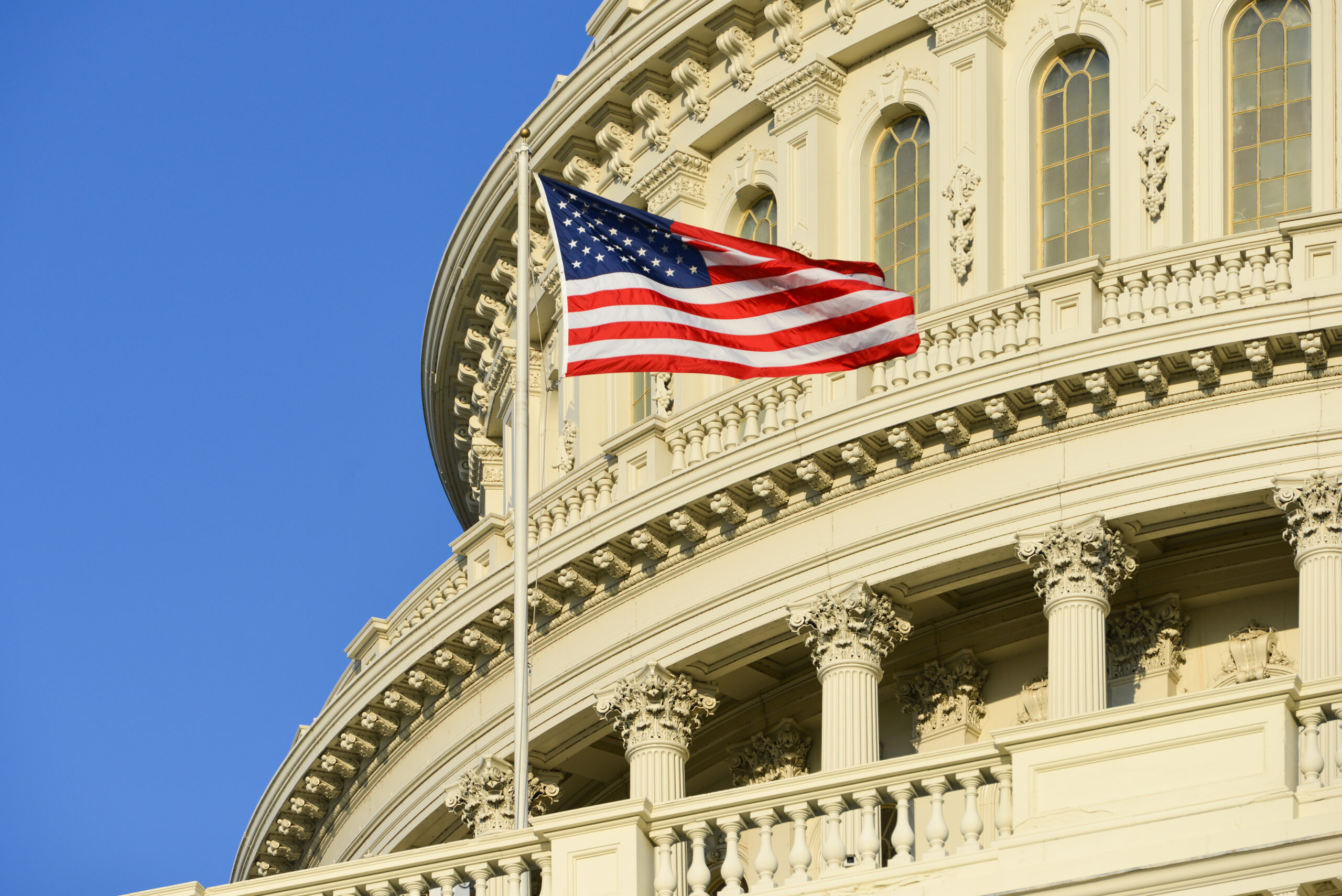Congress passes $1.9 trillion bill, sent to and signed by President Biden
On March 11, 2021, President Biden signed the American Rescue Plan Act of 2021 into law.
The bill largely aligns with the framework put forth by President Biden before his inauguration on January 20. It includes extensions of enhanced unemployment relief, increased funding for COVID-19 testing and vaccination programs, aid to state and local governments, and assistance to schools to help get students back into classrooms.
The bill also includes a number of tax provisions, including a third round of direct stimulus payments, enhancements of many personal credits meant to benefit people with lower incomes and children, extensions of highly popular payroll tax credits for employers first instituted at the beginning of the pandemic, and changes related to retirement plan funding.
Individual Tax Relief
Recovery Rebates
The bill includes a third round of direct stimulus payments for taxpayers. The Coronavirus Aid, Relief, and Economic Security (CARES) Act signed into law in March, 2020 included the first round, with $1,200 for individuals and $500 for qualifying children. In December, 2020, the Consolidated Appropriations Act, 2021, provided an additional $600 stimulus payment, for taxpayers and children. At the time of the second payment, many lawmakers, as well as former President Trump and then President-Elect Biden, stated that the amount should be increased to $2,000.
The American Rescue Plan Act of 2021 provides a $1,400 stimulus payment. The payments are essentially credits against 2021 taxes, but fully refundable and payable in advance (similar to the prior payments). Also like previous stimulus payments, this third round is subject to income limitations. Under the Senate-passed version of the bill, the amount of the payment phases out ratably for single filers with adjusted gross income over $75,000 ($112,500 for heads of households and $150,000 for joint filers). The stimulus amount phases down to $0 for single filers with $80,000 of adjusted gross income ($120,000 for heads of households and $160,000 for joint filers).
Under the version of the bill originally passed by the House, the phaseout range of the payments was much larger, with the result of higher-income taxpayers being eligible. In order to ensure support from moderate Democrats in the Senate, the range was tightened to eliminate the payment for many higher-income taxpayers.
Adjusted gross income amounts for the 2020 tax year are used in applying the phaseout, but 2019 amounts will be used in lieu of 2020 amounts for taxpayers who have not yet filed 2020 returns.
As was the case with the last two stimulus payments, amounts to which taxpayers would have been entitled but did not receive will be creditable when preparing 2021 tax returns in 2022. Also, amounts received based on 2019 or 2020 returns that would have been lower when 2021 returns are prepared do not have to be repaid.
If the bill stays on track to become law by March 14, taxpayers who have an increase in adjusted gross income in 2020 as compared to 2019 may want to hold off filing 2020 returns until the filing deadline. This will maximize the amount of stimulus payments received because their stimulus payment will not be potentially reduced by the higher 2020 adjusted gross income.
The $1,400 is available for all persons for whom a Social Security Number is associated, and is $1,400 for taxpayers, children, and non-child dependents. The Treasury and IRS are granted authority to provide payments to nonfilers based on available information.
Child Tax Credit
The bill includes a significant overhaul of the child tax credit, but only for the 2021 tax year. Under current law, the amount of the child tax credit is equal to $2,000 per child, but only $1,400 of that amount is refundable (meaning that the taxpayer receives the credit even if there is an insufficient amount of taxes to be credited against). The bill increases the amount to $3,000 per child (or $3,600 for a child under the age of six) and makes the credit amount fully refundable. The bill also increases the maximum age of qualifying children to include 17-year old children.
The excess of the amount of the credit over the present-law $2,000 amount is phased out by $50 for every $1,000 of modified adjusted gross income in excess of the threshold amount ($150,000 for joint filers, $112,500 for head of household filers, and $75,000 for single filers). Once the excess amount is eliminated, the amount of the credit remains at $2,000 until the present law phaseout thresholds are reached ($400,000 for joint filers, $200,000 for all other filers).
The Treasury and IRS are directed by the bill to issue advance payments of half of the credit amount beginning on July 1, 2021. The advance payments are to be issued periodically in equal amounts through the end of 2021. The remaining half of the credit not paid in advance is received when filing 2021 returns, as the full amount is claimed on the return but reduced by the aggregate amount received in advance.
The original House bill directed the payments to be made on a monthly basis starting in July, but the Senate bill changed it to the less specific periodic.
In the case of a taxpayer who received advance payments in error (for example, where a 2019 or 2020 return indicated a dependent child who is no longer a dependent in 2021), the bill provides a safe harbor provision, protecting taxpayers from having to pay back overpayments of up to $2,000 per child. The safe harbor is available for single taxpayers with modified adjusted gross income of $80,000 or less ($120,000 for joint filers, $100,000 for head of household filers).
The IRS and Treasury are directed to create a website for taxpayers to opt out of receiving advance payments, or to provide information on status changes that would impact the amount of the credit.
Earned Income Tax Credit
The bill includes several enhancements to the earned income tax credit (EITC). Under the bill, for 2021 only, the amount of the credit is significantly increased for filers without children. The changes cause the childless EITC amount for 2021 to increase from $543 to $1,502, increase the amount of income at which the credit is maximized to $9,820 (currently set at $7,100) and increase the threshold for the phaseout of the credit for non-joint filers to $11,610 (currently set at $8,880). The minimum age for childless claimants of the EITC is also reduced from 25 to 19 (except in the case of full-time students).
The bill also allows taxpayers to substitute 2019 earned income for 2021 earned income in claiming the EITC on 2021 returns if 2021 earned income was less than 2019 earned income.
A similar provision was included in the Consolidated Appropriations Act, 2021, applicable to 2020 claims of the EITC.
Other changes to the EITC are made permanent. This includes the elimination of the prohibition against filers claiming the childless EITC solely because they are unable to claim the EITC for filers with children due to the lack of identification requirements. Additionally, a married but separated individual can claim the EITC as an unmarried person as long as certain requirements relating to children are satisfied. Finally, the amount of disqualifying investment income for purposes of the EITC is increased to $10,000, adjusted for inflation after 2021. The current amount of disqualifying investment income is $3,650 for 2021.
Dependent Care Assistance
The amount of the child and dependent care credit is significantly enhanced under the bill for 2021 only. Under current law, the amount of the credit is equal to 35 percent of qualified expenses for care of a qualifying individual up to $3,000 for one qualifying individual or $6,000 for two or more qualifying individuals. However, the credit percentage is reduced by one point for every $2,000 of adjusted gross income in excess of $15,000, until reaching 20 percent, at which point it is no longer reduced.
The bill increases the credit to 50 percent of qualified expenses, and reduces the credit percentage by one point for each $2,000 of adjusted gross income in excess of $125,000. The credit percentage is then not further reduced below 20 percent until adjusted gross income reaches $400,000, at which point the reduction of credit percentage continues until reaching zero. Additionally, the amount of eligible expenses qualifying for the credit are increased to $8,000 for one individual and $16,000 for two or more individuals. Finally, the credit is made fully refundable.
In addition to the changes to the credit, the maximum exclusion of employer-provided dependent care assistance is also increased for 2021 to $10,500, or $5,250 in the case of a married taxpayer filing separately. These amounts are roughly double the maximum exclusion under current law.
These changes are applicable to 2021 only.
Unemployment Relief
The bill also includes an extension of enhanced $300 weekly unemployment relief first made available in the early pandemic relief bills. The extension, originally set to expire in March, would run through early September under the bill, but with some changes. The notable change for tax purposes makes the first $10,200 of unemployment relief received in 2020 exempt from tax for households with up to $150,000 of income.
It is unclear at this point how the IRS will handle this change in treatment of unemployment compensation for taxpayers who have already filed their 2020 returns.
Exclusion of Forgiven Student Loans
The Senate bill includes an expanded exclusion of forgiven student loan amounts applicable to loans discharged after 2020 and before 2026. Under current law, forgiven student loans are only excludable given certain conditions (such as the death or disability of the borrower). However, this expansion allows for the exclusion to apply to any discharge of student loans for any reason during the period. The exclusion also applies to private student loans, as long as there is no required provision of services to the discharging lender.
Many democratic lawmakers have been vocal about their view that the government should forgive at least a portion of federal student loan balances, either through legislative or executive action. While there is broad difference in opinion as to whether President Biden has the authority to take this step through an executive order, this provision would seem to tee up some sort of action in the future.
Employer Tax Relief
Paid Sick and Family Leave Credits
One of the first relief measures provided by Congress in the early days of the pandemic was the payroll tax credit for employers providing paid sick and family leave, as well as a similar credit for self-employed workers. The period for which the credit could be claimed was originally set to expire on December 31, 2020, but was extended to March 31, 2021. The bill extends the applicable period to September 30, 2021. The bill also increases the limit on applicable wages for which the credit can be claimed to $12,000 from $10,000, effective after March 31, 2021.
The leave for which a credit can be claimed is also expanded by the bill to include time off to receive a COVID-19 vaccine, or to recover from a vaccine-related illness or injury. The bill will also make the credit applicable to the hospital insurance (HI) tax, and not just the old-age, survivors, and disability insurance (OASDI) taxes, effective March 31, 2021.
The bill would also reset the ten-day per employee limitation on claiming the credit. The original bill limited employers to claiming the credit for a total of ten days’ leave for an employee, and that ten-day period applies from the original start date through March 31, 2021. Under the bill, effective after March 31, 2021, a new ten-day period is available.
For self-employed persons looking to claim the credit, the number of days for which the credit can be claimed is increased to 60 days (from 50 days) under the bill, retroactively effective after December 31, 2020.
Employee Retention Tax Credit
Another highly popular provision of the original COVID-19 relief legislation is the payroll credit for employee retention. The credit was extended through June 30, 2021 by the Consolidated Appropriations Act, 2021. The bill extends the credit through the end of 2021, and, like the paid sick and family leave credit, makes it available to apply to HI taxes in addition to OASDI taxes after June 30, 2021.
Retirement Plan Funding
The bill includes several changes meant to help employers meet funding obligations for pension plans. For multiemployer plans, the bill provides delays in having to apply changes to funding plans or schedules, as well as providing extended improvement and rehabilitation periods for plans that entered critical or endangered status in 2020 or 2021. The bill also provides a longer investment loss amortization period for multiemployer plans, effective for plan years ending on or after February 29, 2020.
For single-employer plans, the bill provides a longer period for amortizing funding shortfalls, effective for plan years beginning after December 31, 2019. Under the bill, the amortization period is extended to 15 years, from the current seven years. The bill also provides for an extension of funding stabilization measures for single employer plans, also effective for plan years beginning after December 31, 2019.
Perhaps most significantly, the bill provides for a freeze beginning in 2030 to the inflation-adjusted increases to the annual contribution limit to defined contribution plans, the annual defined benefit limit, and the maximum limit on compensation that that may be taken into account when determining the limit on contributions and benefits of an employee. For 2021, these amounts are $58,000, $230,000, and $290,000, respectively. The annual inflation adjustments would continue normally until 2030.
Miscellaneous Relief
A handful of other tax provisions are included in the bill, with some aimed at making health care more affordable and ensuring that pandemic-related aid does not create tax burdens on businesses receiving them.
COBRA Coverage Assistance
The bill includes premium assistance for COBRA continuation coverage through September 31, 2021. The Senate bill calls for a 100% reduction of COBRA premiums for eligible individuals (the House bill was limited to 85%). The assistance is provided by reimbursing the employer (or whoever is to receive the premiums) for unreceived premiums through a credit against HI payroll taxes (not OASDI taxes).
The bill excludes the premium reductions from income. It also includes a penalty to be paid by employers failing to provide adequate notice to former employees whose COBRA continuation period has lapsed.
Premium Tax Credits
The bill makes changes to the premium tax credit. For 2021 and 2022, the bill modifies affordability percentages used in calculating the premium tax credit to make credits available for individuals with incomes below 400 percent of the federal poverty line and increases credit amounts for those already qualified. For 2021, the bill makes advance premium tax credits available for individuals receiving unemployment compensation. And the bill eliminates the recapture provisions applicable to 2020 for taxpayers receiving excess premium tax credits.
Tax Treatment of COVID-19 Relief
The bill provides that Targeted Economic Injury Disaster Loans (EIDL) and Restaurant Revitalization Grants received from the Small Business Administration will not be subject to income tax, and the exclusion will not result in the denial of a deduction reduction of tax attributes, or denial of increase in basis.
The Consolidated Appropriations Act, 2021 included similar provisions applicable to EIDL grants, grants to entertainment venues, educational grants, etc.
Worldwide Allocation of Interest
Finally, the bill includes a repeal of the one-time election available to an affiliated group of corporations to determine foreign-source taxable income of the group by allocating and apportioning interest expense of the domestic members of a worldwide affiliated group on a worldwide-group basis, as if all members of the worldwide group were a single corporation. The election was to be available for the first time in 2021, but the bill provides that treatment of such income will continue under pre-2021 rules.



